Castor Benefits, Remedies, How To Use, Research, Side Effects
Castor root, seeds and leaves are extensively used in Ayurveda treatments, both for externally and internally. Castor is aphrodisiac, relieves pain and is useful in neurological disorders.
Botanical Name- Ricinus Communis Linn.
Family- EUPHORBIACEAE (Eranda kula)
Note: This article deals with castor seeds, roots and leaves.
Read here about castor oil benefits

Table of Contents
Home Remedies
By Dr MS Krishnamurthy MD(Ayu), PhD
Jaundice
1. Tender castor leaf paste in jaundice:
Tender leaves which are coppery red in color are collected and fine paste is made. This is administered early in the morning in an empty stomach. This helps to decrease the bile in case of jaundice.
Swelling
2. Mature leaf paste over the swelling:
Mature leaves are collected and fine paste is made. To this little salt is added and warmed. This paste is applied over the muscular swelling. This pacifies the swelling and reduces the pain.
Backache, constipation
3. Root decoction in backache, sciatica and constipation:
20-25 grams of dried roots is taken and its decoction is made. Or else medicated milk can also be prepared. This is administered twice daily in the dose of 40 ml of decoction. This helps to relieve the pain caused in the conditions like back ache, sciatica etc. Also it pacifies constipation too.
Read related: Low Back Pain – Ayurveda View Point And Treatment
Gouty arthritis
4. Castor leaf smeared with sesame oil in case of gouty arthritis:
Whole leaf of the castor is smeared with sesame oil and warmed slightly. This is applied over the joints affected by gouty arthritis. This pacifies pain and swelling, if the procedure is carried regularly for a week.
Read related: Gout: Causes, Symptoms, Treatment, home remedies
Worm infestation
5. Palasha seed powder and castor oil in worm infestation:
Palasha (Butea monosperma) seeds are taken and its fine powder is made. 1-2 pinch of this powder is taken along with castor oil in the empty stomach. The pinworms are relieved soon within 3-4 days by this medication.
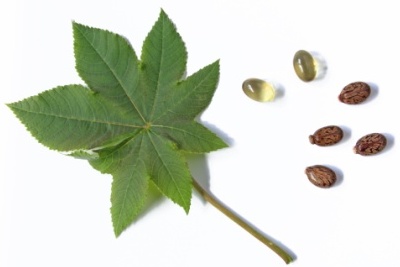
Medicinal properties
Castor medicinal Properties
Rasa (taste) – Madhura (sweet), Katu (pungent), Kashaya (Astringent)
Guna (qualities) – Snigdha (oily, unctuous), Teekshna (strong, piercing), Sookshma (minute, enters minute body channels)
Vipaka- Madhura – Undergoes sweet taste conversion after digestion
Veerya – Ushna – Hot potency
Effect on Tridosha – Balances Kapha and Vata Dosha.
Utility, types
Utility: The bulk of 95% of the castor seeds produced in India is utilized for extraction of oil & rest of it is used for sowing purposes.
Types
I. Red Variety – White variety are 2 types of Eranda.
II. Annual – Perennial are 2 types of Eranda.
Sanskrit verse
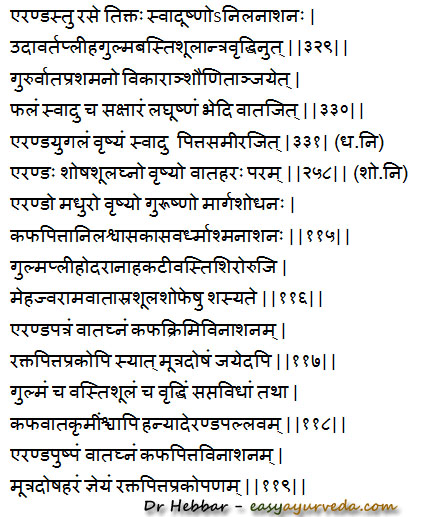
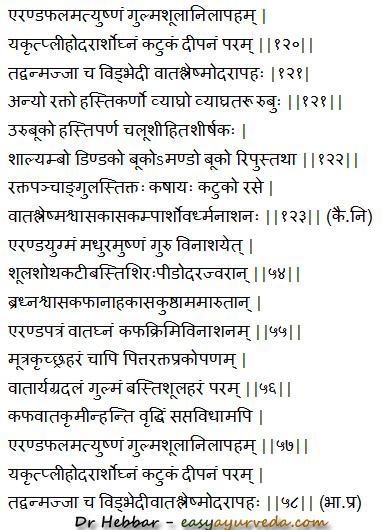
Part used, dosage
Part Used- Root, leaf, Seed, Oil
Dosage- Root power 3-5 g, decoction 50-100 ml; seed 1-5 gram, Castor oil 5-10 ml
Fatal dose – 5 -10 crushed seeds
Fatal period – 2 to several days
Morphology
Stem – Erect, Herbaceous above and woody below
Leaf – Alternate, Broad, Palmately lobed gland dotted, green or reddish petiolate with reticulate venation
Inflorescence – A terminal venation
Flower – Monoecious, Fruit – Globose, explosively dehiscent, 3 seeded capsule. Fruits covered with short or long fleshy prickles
Seed – Carunculate, Endosperm is oily
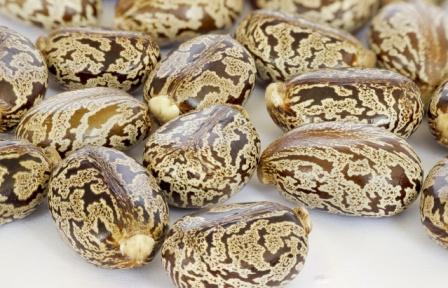
How to take it?
Castor root or seeds are better taken only as per professional advice. It is best to avoid self medication with this. However, external application of leaf or root paste can be done as per the above guidelines.
Castor seeds used for Purgation:
Milk boiled with Trivrit (Operculina turpethum) and castor seeds is used in the treatment of ascites due to Pitta imbalance (Charaka Samhita Chikitsa Sthana, 13th chapter
Castor root benefits
Of all the substances capable of aphrodisiac and Vata balancing effects, castor root is the best.
Udavartahara – relieves bloating, gas distension in abdomen
Pleehaghna – useful in spleen disorders, splenomegaly
Gulmahara – useful in abdominal tumors
Bastishoolahara – relieves bladder pain
Antravruddhinut – useful in hernia
Shonita Vikara – relieves blood imbalance disorders
Shoshahara – relieves emaciation, dehydration
Shoolaghna – relieves abdominal colic pain
Margashodhana – cleanses gut
Shwasahara – useful in treatment of asthma and chronic respiratory disorders.
Kasahara – useful in cough and cold
Anahahara – relieves gas, fullness of abdomen, bloating
Kati Basti Rujahara – relieves pain in lower back and bladder region.
Shiroruji – relieves headache
Mehahara – useful in urinary tract disorders and diabetes
Amavatahara – useful in rheumatoid arthritis
Shothahara – relieves swelling, edema, anti inflammatory
Root bark has emetic & purgative action & cures lumbago skin diseases, dyspnea, hydrocele, flatulence, piles, cough, headache, leprosy, arthritis, calculus & dysuria, fever, swelling, mental diseases, painful urination & the seeds are useful in hepatitis. Tender leaves allay pains in the bladder.
The roots are sweet, acrid, astringent, thermogenic, carminative, purgative,
anthelmintic, emollient, diuretic, aphrodisiac, galactagogue, sudorific, expectorant & depurative. Which cures gulma, amadasa, constipation, inflammations, fever,
ascites, strangury, bronchitis, cough, leprosy, skin diseases, vitiated conditions of
vata, colic, coxalgia & lumbago.
Root bark used for emetic & purgative purposes, beneficial in lumbago & skin diseases.
Castor fruit, flower benefits
Eranda Phala – Castor fruit uses:
Svaadu – sweet in taste
Sakshara – slightly alkaline, strong in nature
Laghu – light to digest
Ushna – hot
Bhedi – purgative
Vatajit – Balances Vata Dosha
Castor fruit uses:
Atyushna – It is very hot
Katu – pungent taste
Gulmahara – useful in abdominal tumours
Shoolahara – relieves abdominal colic pain
Anilapaha – Balances Vata Dosha
Yakrut hara – useful in liver disorders
Pleehahara – useful in spleen disorders, splenomegaly
Udarahara – useful in ascites, enlargement of abdomen
Arshanut – useful in piles, hemorrhoids
Deepana – improves digestion strength
Kaphavatahara – Balances Kapha and Vata Dosha
Castor seeds without the hull are used for birth control, leprosy, and syphilis. The hull (the seed cover) is poisonous and not used orally.
Castor flower uses: It balances Vata Dosha but may worsen bleeding disorders.
Castor Flowers cures urodynia & glandular tumours.
Castor leaf benefits
Vataghna – Balances Vata Dosha
Kaphahara – Balances Kapha Dosha,
Krimihara – antimicrobial, useful in worm infestation
Mutradoshahara – useful in urinary tract infection
Pitta Prakopi – increases Pitta
Gulmahara – useful in abdominal tumours
Bastishoolahara – relieves bladder pain
Vruddhi – useful in hernia
Mutrakrichrahara – Relieves dysuria, urinary retention, acts as diuretic
In case of snake bite, once the treatment is properly done, to remove remnant poison from the body, young castor leaf shoot is made paste with water, filtered. That water is given for drinking. It is also used in treating Aconitum and opium toxicity.
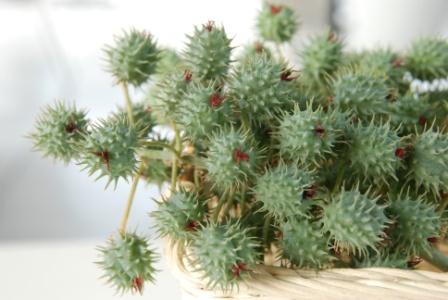
Since all parts of castor are useful to balance Vata dosha, they are used in treating paralysis, sciatica, neuropathies, neurological pains etc.
Castor Leaves are diuretic & galactagogue cures burns, nyctalopia,
strangury, vitiated conditions of that is rheumatoid arthritis, urodynia & arthralgia.
Leaves externally applied to boils & sores in the form of poulties.
External application
External application of castor leaf and root –
Castor leaf is dipped in sesame oil and heated till it becomes hot. This is applied over blunt injuries, arthritis, and painful joints to relieve pain.
Castor oil leaf and root is made paste with sesame oil or castor oil, slightly heated and applied externally to relieve migraine, low back ache, sciatica pain, arthritis pain, mastitis and skin disorders associated with pain.
Castor seed, oil benefits
Castor Seeds are acrid, thermogenic, digestive, cathartic & aphrodisiac cures dyspepsia.
Oil obtained from seeds is slightly bitter, acrid, sweet, antipyretic, thermogenic &
viscous.
The white variety is specially used in fever & red variety is used in swelling, pallor, & mental diseases.
Research
Research on Ricinus communis:
Anti-microbial property
Anti inflammatory potential
Anti bacterial property
Experimental and clinical researches:
The roots are aphrodisiacs and the tender leaves are cholagogues.
Pharmacological research has shown that the fraction II of the alcoholic extract of the root bark showed patent anti- inflammatory activity on experimental animals, comparable to aspirin and corticosteroids.
Recently also reported that apart from its purgative action, the plant possesses efficacy in chronic rheumatic affections. The petroleum ether extract possesses significant inhibitory affect in all the test except prostaglandin.
- Singn Ravi kumar – studies on fistula in Ano treated with Kshara Sutra prepared with Tankana.
- Sharma R.M. – Gridhrasi Ka Nidana Chikitsatmaka Adhyayan (Eranda paka prayoga)
- Shaikh Alum – Eranda moola Vrishyanam.
- Sharma M.L. – Amavata Roga par : Eranda beja kshira paka Prayoga ka Adhyayan.
- Jaiswal S.K. – Amavata Men Eranda ka prayogik Adhyayan.
- Sain R.C. – Eranda Moola ka Guna – karmatmaka Adhyayan Evam Amavata par prabhava.
Side effects
Its seed skin is poisonous hence, should be avoided
It is best to avoid castor during pregnancy. It can be used during lactation and in children, under medical supervision.
Since it can induce purgation, it is best avoided in people with diarrhea and dysentery.
Interaction with medicines, supplements
Can this be used while taking Homeopathic medicine?
Yes. This product does not react with homeopathic medicine.
Can this medicine be continued while taking supplements like multivitamin tablets, Omega 3 fatty acids etc?
Yes. Generally, this product goes well with most dietary supplements. However, if you are taking more than one product per day, please consult your doctor for an opinion.
With western
medicines
Seek your
doctor’s advice if you are taking this product along with other western
(allopathic / modern) medicines. Some Ayurvedic herbs can interact with modern
medicine.
If both Ayurvedic and allopathic medicines are advised together, then it is
best to take Allopathic medicine first, wait for 30 minutes and then take the
Ayurvedic medicine.
Ayurvedic medicines
Ayurvedic medicines with castor as ingredient:
Maharasnadi Kashayam – used in Vata disorders like Kampavata (Parkinson’s disease), hemiplegia, paraplegia, Neck pain, etc
Chaturmukha ras – castor leaves are used. It is used in the treatment of asthma, anaemia, diabetes etc.
Eranda Pak – used in the treatment of Vata diseases, abdominal colic pain, bloating, etc
Gandharvahastadi kashayam – used in the Ayurveda treatment of Vata imbalance, bloating, constipation, lack of taste in food.
Poisonous action and treatment
Toxic symptoms of ricin:
The bark of the root is a powerful medicine as an external purgative. The oil is mildly laxative & cathartic. Seeds are toxic & many are prone to fatal if consumed in large quantities.
Castor seed contain toxic components
2.8-3.0% on the whole seed.
10% in flour which is highly poisonous.
Principal toxic substances are albumin, ricin. Symptoms are poisoning which do not often appear for several hours. After injection, it consists of vomiting, colic, hemorrhagic, gastroenteritis, stupor, convulsions, edema & circulatory collapse.
Treatment for ricin poisoning: For poisoning consists of gastric lavage, saline cathartics, maintenance of fluid & electrolyte equilibrium & symptomatic measures.
Ricin also causes extensive inflammation of the eyes. It possesses antigenic or immunizing action, when administered in small doses it produces in the body an anti-toxic analogous to that produced against bacteria.
Purification method
Purification – Eranda shodhana:
Seeds of Eranda for which fomentation is done in coconut water for 3 hours & washed with water & dried under sunshine.
Use in Panchakarma
Usage of leaves in Panchakarma:
The castor leaves are used in a sweating treatment, called Prastara swedana therapy. Here, the hot boiled herbs are spread over a stone bed, covered with leaves of castor and the patient is made to lie on it for a few minutes.
Vernacular names
Names in different languages:
Hindi Name- Erand, Redi, Andi, Arand, Arend, Erend, Rendi, Erandah, Andih, Renda Erandih
English Name-Castor, African Coffee Tree, Arandi, Bi Ma Zi, Bofareira, Castorbean, Castor Bean, Castor Bean Plant,
Bengali Name-Rehri, Bhairenda
Telugu Name- Amudamu
Tamil Name- Amanakku, Kottai muthu, Amanakkam, Sittamunuk, Chittamant.
Bengali Name- Bherenda, Bherenda, Rehri, Bhaerand, Bherenj
Marathi Name- Erandi
Malayalam Name- Avanakku,
Gujarati Name- Diveligo, Diveli Erandi, Erandah, Divelo.Erandioh, Erandoh, Rendi.
Kannada name – Haralu – Harlu, Manda, Oudla.
Farsi name – Bed Anjeer
Bombay name – Erendi, Gab.
Arabian name – Khirva
Assamese name – Eri
Kumaon – Ind – rendi
Lepcha – Rak – lop
Malayalum – Avanakku, Chittamanakku.
Marathi – Erandi, Yarandicha, Erandah, Rendi.
Nepali – Areta , Alha, Orer.
Oria – Gab.
Punjabi – Aneru, Arand, Arind.
Rajasthani – Edia, Arend.
Santal – Eradom
Sind – Ayrun – kukri, Heran.
Telugu – Amadom, Amdi, Eranudapu, Erandama,Amudamu,
Erandamu, Amudamuchettu.
Arabic – Khriva, khriba.
Burmese – Kyeksu, kesu.
Chinese name- Pee – ma.
Egyptian name- Kiki.
Nepali – Areta , Alha, Orer.
Oria – Gab.
Punjabi – Aneru, Arand, Arind.
Rajasthani – Edia, Arend.
Santal – Eradom
Sind – Ayrun – kukri, Heran.
Tamil name – Amanakkam, Sittamunuk, Kattai muthu, Chittamant.
Telugu name – Amadom, Amdi, Eranudapu, Erandama,Amudamu,
Erandamu, Amudamuchettu.
Arabic name – Khriva, khriba.
Burmese name – Kyeksu, kesu.
Chinese name – Pee – ma.
Egyptian name- Kiki.
Sinhalese – Endaru.
Sumatra – Farak.
Persion – Ved Anjir.
Distribution
Indigenous to the southeastern Mediterranean Basin, Eastern Africa, and India, found in tropical regions.
All over India, common in tropical regions, cultivated throughout India in gardens and fields, also run wild in waste places. The plant found hotter parts of the country. It is believed to be a native of tropical Africa.
Major chemical constituents
Ricinus communis Major chemical constituents
Castor Seeds & Leaves- Ricinine(toxic alkaloid), 1-methyl-3cyano-4methoxy-2-pyridone
Castor Seed coat – Lupeol, Lipida,Phosphatids etc.
Castor Seed oil – arachidic, ricinoluc, Palmitic, Strearicetc. Acids; hexa decanoic, Hydrocyanic& uric acids; squalene and tocopherols etc. (Reference: Illustrated Dravyaguna Vijnana, Vol. II, by Dr JLN Shastry)
It contains fixed oil, Recin, ricinine, glyseroids, ricinolic acids, having purgative actions.
stearic acid, hydroxy stearic acid, lipids, phosphatides,arachidic, chlorogenic, oleic, palmitic, hexa decanoic hydrocyanic and uric acids.
Sanskrit synonyms
Gandharva Hasta, Yaksha Hasta, Panchangula – leaves having hand like projections
Deergha Danda – Long stalk
Eranda – by balancing Vata dosha, castor relieves stiffness and promotes movement.
Vardhamana – Grows quickly
Vyaghrapuccha – inflorescence resembles a lion’s tail.
Rubu, Rubaka, Urubaka – Balances Vata Dosha
Vyadambaka – which helps in purgation
Hastikarni, Chitraka, Uttanpatraka, Urubuka, Aamanda, Uttana Patraka
Eranda: ‘Erayathi vayu ethi Eranda.’
Making the parts to move by removing the vatha Dosha
Gandharva Hastha: ‘Gandharvahastha Mriga Visheshasya Bhutha
visheshasyeva va hastho Asya ethi’
leaf resembles like the hastha of Mriga called gandharva
Panchangula :Pancha puthrathvath Panchangula ethi’
The leaf resembles that of a palm having 5 fingers.
Vyaghrapuccha: ‘vyaghrasya puccha eva pushpa guccha Asya ethi’
flower bunch resembles like that tail of tiger.
Urubuka: ‘Urubuka Mahantham vayum vayathi ethi’
One which removes aggravated vayu.
Chithraka: ‘Chithrayathi Ashrayam Karothi vayu Adhi Roga Nivaranena ethi’.
Drug which subside vatha vikara.
Chithra bija:’Chithrani chithrithani Bijani Asya ethi’
seeds are having different designs & colour
Vathari:’Vathasya Ari:Shathru: nashako va ethi’
drugs act as vatha hara.
vyadambara:Drugs act as ‘mala shodhaka’
Amanda:Plant is beautiful
Vardhamana: Plant which grows rapidly.
Uttanapathraka: Leaves & petiole are erect.
Deerghadanda: Petioles are very long.
Chanchu :Female flowers have beaks like projections.
Hasthikarna: The leaves are big.
Systemic classification
Kingdom – Plantae
Subkingdom – Phenerogamae
Division – Angiospermae
Class – Dicotyledonae
Subclass – Archichlamydae
family – Euphorbiaceae
Genus – Ricinus
Species – Communis
Varieties
Dhanvantari Nighantu, Sodhala, nighantu, Kaiyadeva Nighantu, Bhava Prakasa Nighantu, and Raja Nighatu, described two varieties of Eranda viz Shveta Eranda (white) and Rakta Eranda (red) varieties.
Raja Narahari mentioned another variety in the name of Sthula Eranda.
Both red and white varieties are identified as Ricinus communis.
Classical categorization
Eranda – Classical Categorisation
Charaka-
Bhedaniya – group of herbs that cause purgation
Angamarda Prashamana – group of herbs that relieve pain
Svedopaga – Group of herbs useful in swedana – sweating treatment
Susruta-
Vidarigndhadi,
Adhobhagahara – group of herbs useful in Virechana – elimination of morbid toxins from rectal route
Vata Samshamana – group of herbs that balances Vata
Vagbhata- Vidarigandhadi
Sthanika Karma (Systemic Action)
External – Relieve pain and edema. External application of Eranda taila or hot fomentation with its leaf is indicated in back pain, sciatica, Arthritic pain, joint inflammation, skin disorders, breast edema, inflammation of throat region, and to strengthen nervous system
Nervous System – It has vatahara action (Pacify vatadosha), improve intellect, indicated in painful inflammatory conditions, hemiplegia, Amavata, Sciatica, Kampavata (Parkinson disease), headache, whole body heaviness(Angamardha) etc.
Digestive System – Amasodhana (Remove toxic materials of metabolism / improper digestion) It acts as carminative because of its hotness and helps to remove blockages in channels, antimicrobial and provide smoothness to the body. indicated in Phantom tumor, abdominal cramp, constipation, hepatic and splenic disorders, hemorrhoids, hernia etc.
Circulatory System – good for heart, relieve edema
Respiratory System – Alleviate kapha dosha, Indicated in Cough, Breathing disorders
Satmikarana – Aphrodisiac, rejuvenative, Anti poisonous, Promote body strength, Its leaf bud decoction is indicated in snake bite poisoning, induce vomiting and purgation, which helps to remove toxins from the body. Its paste can be used to apply externally over skin. Also indicated in Aconitum and opium poisonings.
Excretory system – it clears urine, Indicated in painful micturition, pain in lower abdomen.
Reproductive System – Aphrodisiac, stimulate breast milk production, purify semen, and uterine cavity. Indicated in gynecological disorders, hernia, Male reproductive issues..
Skin – Indicated in various skin disorders
Tapakrama – Indicated in Fever as it stimulates sweat production.





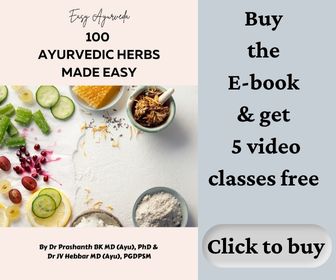





27 comments on “Castor Benefits, Remedies, How To Use, Research, Side Effects”
K K BERRY
Very informative, guiding, lot of plants are standing on road to our , we have also got sir is trees and seeds (tonic) , gooseberry fruit, pomegranate, lemon, margosa holybasil..aloe Vera, sheesham tree leaves, calotropis. …how we can create awareness among people to include all above in treatment system as prevention is better than cure.
We are giving them free amla pdr, triphala pdr, aloevera amla juice . More people are afflicted by diabetes, joint pains, rheumatoid illness and cough. Berry
Henrietta
K K Berry I would like to try the amla pdr. triphala and aloevera juice!
Joseph Silumuloa
Nicely done Dr.!t. would be more befecial if given for a few diseases in rural areas where castor is easily available. If explained a bit more for uses with a few example for practice. Coist effectiveness should be the goal of your advices. Joseph CCM.
Dr J V Hebbar MD(Ayu)
Sure sir. Will consider this in future article.
sushil
Could you please elaborate the use of castor oil for Mastitis.
Thanks
nikhil kumar dalal
how castor seeds are used for birth control
Dr Malini Bhat
Dear sir, According to Ayurvedic and Unani treatises, if a woman chews one castor seed daily for a period of seven days after the menstruation she becomes sterile. This has been interpreted by many that castor seed is a herb for birth control and if the woman swallows one castor seed, after the menstrual cycle she will not conceive during that month. When pregnancy is desired, the practice can be given up and conception follows after a year.
Ricky
I heard Castor oil + coconut oil is good hair gain. How true or genuine is this?
Dr J V Hebbar MD(Ayu)
It is good combination for hair.
Dr J V Hebbar MD(Ayu)
No.
Pallavi
Hi Dr, I bought some castor seeds please guide me as to how I can use them for external and both oral. I bought them to make a tea by boiling them in water and use them for constipation .
Dr J V Hebbar MD(Ayu)
Hi, seed powder in the form of tea, boiling with water or
Or seed powder – after removing the external skin, is taken – 500 mg at night to relieve constipation.
Please consult an Ayurveda doctor before taking it.
mohammed siddiqui
Hi Doctor, I always read your articles they are very informative, if possible can you add Urdu names also along with other language, it will be helpful. When I was in India use to see my neighbors use to get Castor leaves or branches from our garden to make Jaundice medicine. Is it true, if so how do they make.I will appreciate if you write the procedure. Thanks
mohammed siddiqui
Thanks very much for your response.
Rajni
Hello doctor,
I m having cold issues since several years and mild allergy asthma ,can castor seeds or leaves help me in any way??
Dr J V Hebbar MD(Ayu)
Please read here
https://www.easyayurveda.com/2017/05/01/castor-home-remedies/
Deborah
Hello doctor, I want to swallow 3 Castor Seed with water to prevent pregnancy for one year. Please tell me if it is 3 or 4 Castor seed I should swallow at a time with water to prevent pregnancy up to one year.
Brotar Organics
Wow! What an educative article. I’m glad for this
Abi
Hello Doctor, thank you for your informative article. I have heard that castor seeds (beans) can be used as contraceptive. But also that the coat contains poisonius protein.
Can you help me with
1. the right dosage for contraception (is it 3 seeds during menstruation for one month or 5 post menstruation for 12 months?)
2. Do i swallow the whole seed (Without chewing) or do i remove the brownish shell and chew the inner seed? What is rge the safest way to remove hull?
Thank you in advance.
Dr J V Hebbar MD(Ayu)
Hi, I do not recommend it as contraceptive as results can vary.
RD
Hi…sir am used soul flower cold pressed castor oil.is it good for hair?
Abi
Hello day doctor, what herb would you recommend for contraception for a woman? Thank you
Dr J V Hebbar MD(Ayu)
I have not found any very reliable herbal contraceptive.
Subha
Hello.. Is castor oil or castor seed helpful in treating plantar warts? If yes, what is the best way to use it? I have been applying castor oil for over three months on my plantar wart for over three months now with no results..
shobhit
we boiled a castor leaf in a cup of water and then drank that water as it is said that this water is useful in removing breast lump.
please let me know if it is poisonous.?
Dr J V Hebbar MD(Ayu)
There is no real proof that it could help with breast lump. Please consult an Ayurveda doctor directly before following any home remedies.
Diganth Hegade
hello,
very nice article, I need to know whether applying castor seed paste on stomach,. for budd Chiari syndrome ,pls reply it’s urgent